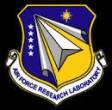Air Force announces funding opportunity for cyber mission assurance
 On June 16, the Air Force Research Laboratory posted a broad agency announcement (funding opportunity number: BAA-AFRL-RIK-2015-0015) for capabilities for cyber mission assurance. Although white papers are accepted at any time during the life of the BAA, vendors are encouraged to submit white papers by July 31, 2015 for FY16 funding. See the full announcement for more details.
On June 16, the Air Force Research Laboratory posted a broad agency announcement (funding opportunity number: BAA-AFRL-RIK-2015-0015) for capabilities for cyber mission assurance. Although white papers are accepted at any time during the life of the BAA, vendors are encouraged to submit white papers by July 31, 2015 for FY16 funding. See the full announcement for more details.
This Broad Agency Announcement (BAA) is a contracting tool directly responsive to Air Force Research Laboratory (AFRL) cyber science & technology (S&T) strategic goals and will address needs that are “left-of-the-threat”. AFRL is looking to procure solutions for anticipating and avoiding cyber threats.
To support these strategic goals, this BAA seeks to procure capabilities for avoiding threats through understanding the cyber situation, assessing potential impacts, and implementing deterrence and effects-based defensive methodologies. As such, it supports work in the areas of trusted hardware, trusted software, trusted data, secure systems/architectures, maneuverability, mission awareness, and mission assurance.
FY16 – FY17 SPECIFIC FOCUS AREA: ASSURED BY DESIGN
Background: Many cyber solutions currently focus on detecting attacks after they occur and then attempt to apply security mechanisms to existing hardware and software. This type of solution is inefficient and keeps systems and networks in a constant state of “react”. A more proactive approach is preventing and avoiding rather than detecting after the fact. This area seeks to develop mathematically rigorous tools and techniques that modify the cyber domain in favor of mission assurance.
Objective: To formally verify that hardware and software implementations meet mathematical specifications that prove correctness of secure designs and to lead research in technologies to mitigate new and emerging threats that could degrade capabilities by developing innovative solutions through science and engineering applications to national security problems. Results of this work would place missions orthogonal to threats. This focus area is not interested in concepts, approaches, and techniques that rely on detection and reaction. The Assured by Design area is divided into three main thrusts: Science of Mission Assurance, Engineering Assured Systems, and Domain Modification.
FY16 SPECIFIC FOCUS AREA: CYBER DECEPTION
Background: Deception is a deliberate act to conceal activity on the Air Force networks, create uncertainty and confusion against the adversary’s efforts to establish situational awareness and to influence and misdirect adversary perceptions and decision processes. Military deception is defined as “those actions executed to deliberately mislead adversary decision makers as to friendly military capabilities, intentions, and operations, thereby causing the adversary to take specific actions (or inactions) that will contribute to the accomplishment of the friendly mission.” Military forces have historically used techniques such as camouflage, feints, chaff, jammers, fake equipment, false messages or traffic to alter an enemy’s perception of reality. Modern day military planners need a capability that goes beyond the current state-of-the-art in cyber deception to provide a system or systems that can be employed by a commander when needed to enable deception to be inserted into defensive cyber operations.
Objective: To provide cyber-deception capabilities that could be employed by commanders to provide false information, confuse, delay, or otherwise impede cyber attackers to the benefit of friendly forces. Deception mechanisms must be incorporated in such a way that they are transparent to authorized users, and must introduce minimal functional and performance impacts, in order to disrupt DoD adversaries and not ourselves. As such, proposed techniques must consider how challenges relating to transparency and impact will be addressed. The security of such mechanisms is also paramount, so that their power is not co-opted by attackers against us for their own purposes. These techniques are intended to be employed for defensive purposes only on networks and systems controlled by the DoD.
FY17 SPECIFIC FOCUS AREA: CYBER AGILITY
Background: Currently, adversaries can plan their attacks carefully over time by relying on the static nature of DoD networks, and launch their attacks at the times and places of their choosing. The DoD needs new tools and technologies to reverse the current asymmetry that favors DoD cyber adversaries, by forcing them to spend more, cope with greater levels of complexity and uncertainty, and accept greater risks of exposure and detection due to the significantly increased requirements for reconnaissance and intelligence collection on DoD networks. AFRL is seeking science & technology for defensive cyber maneuver and agility to disrupt adversary cyberspace operations, including adversary attack planning and execution.
Objective: To reduce attacks by making it harder for a determined adversary to succeed. Increasing agility, diversity, and redundancy will result in disrupting attack planning and execution. Agility mechanisms must be incorporated in such a way that they are transparent to authorized users, and must introduce minimal functional and performance impacts, in order to disrupt DoD adversaries and not ourselves. As such, proposed techniques must consider how challenges relating to transparency and impact will be addressed. The security of such mechanisms is also paramount, so that their power is not co-opted by attackers against DoD for their own purposes.
Full information is available here.
Source: FedBizOpps







